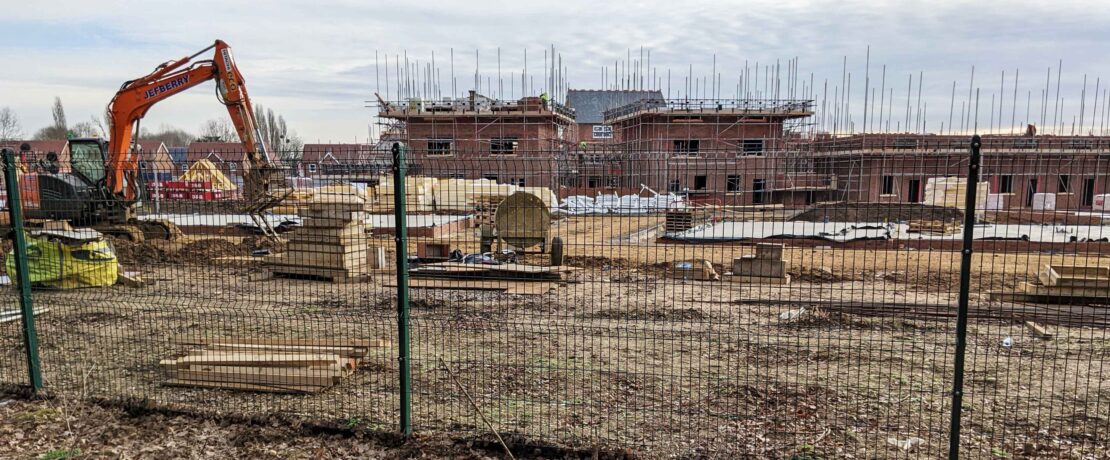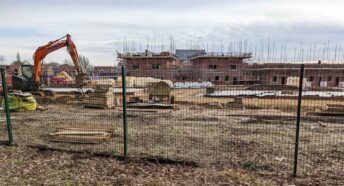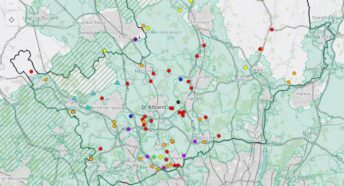Briefing note – National Planning Policy Framework public consultation
CPRE Hertfordshire publishes an initial briefing note on the government’s recently announced consultation into proposed changes to the National Planning Policy Framework. We will publish further analysis and guidance on how to respond to the consultation well before the consultation closing date of 24 September 2024.
Introduction
The Government has published its proposed amendments to the National Planning Policy Framework (NPPF) for public consultation. The NPPF is the key policy guidance for all Local Planning Authorities (LPAs) i.e. Councils, and this consultation follows public pronouncements both before and after the General Election that reform of the planning system is high on its agenda. The consultation will run until 24th September and anyone can respond, through the Government website.
There are already several commentaries available online, mainly from the development industry and its professional advisers. Their tone is not surprisingly supportive of reducing the constraints on economic growth through encouraging development, principally of housing and commercial property, but also major infrastructure. This is the traditional approach to economic growth and it has clear implications for the countryside, an increasing proportion of which will be subject to continuous threat.
Below are listed proposed key changes to the existing NPPF which will impact the countryside. These would take effect immediately after the publication of the revised document in most cases (expected before the end of the year), and affect significantly both Local Plan preparation by councils and the determination of planning applications.
This briefing note is also available for download in pdf format.
Local Plan preparation
- Total Local Plan coverage of England will be required before the end of this parliament; presently only about a third of LPAs have up-to-date Local Plans in place.
- There will be an obligation for LPAs to cooperate for strategic planning purposes; usually for the purposes of accommodating neighbouring authorities’ housing needs.
- Unmet housing need must be accommodated in Local Plans (see below).
- Major economic facilities will be encouraged; specifically, laboratories, data centres, gigafactories, large-scale warehousing.
- Local Plans will be required to encourage economic growth.
- The Government has stated that it will use its “powers of intervention should it be necessary – including taking over an authority’s plan-making directly.”[1]
Housing
- A revised standard method for calculating housing need must be used; this method is based on achieving an arithmetical increase in the existing stock of housing in each local authority.
- No other method will be acceptable; this includes the old standard method calculations of housing need based on projections of housing formation based on population figures.
- The required increase in housing stock in each LPA will be further supplemented by a factor related to affordability which will vary for each LPA according to house values; in other words, the required increase in housing stock will be greatest where prices are highest.
- The standard method is to be used to produce a five-year housing land supply without exception.
- The ability to apply policy constraints to housing need figures remains (as provided by paragraph 11b of the NPPF) but these protections are weakened, especially for Green Belt (see below).
- Housing need calculated under the required new standard method will result in considerably higher housing targets throughout the country, and particularly in the South East due to the affordability factor.
- LPAs still preparing Local Plans will be subject to the new housing need figures; some at an advanced stage may submit their LPs for Examination within a month of the new NPPF being published if their existing housing need is within 200 houses per year of the revised requirements.
Green Belt
Green Belt to be released in Local Plans will be subject to tests based first on whether it has been previously developed, and then whether it may be regarded as grey belt (see below).
- The five purposes of the Green Belt remain (see Appendix below) but are weakened by exceptions related to the emphasis on housing need over a five-year period and grey belt considerations.
- Grey belt land is defined (in Annex 4 of the NPPF consultation document) as previously developed land, and then land which makes a limited contribution to the five purposes of the Green Belt.
- Land proposed to be removed from the Green Belt as the result of planning permission being granted should include 50% affordable housing, including a proportion for social rent. (The proportion for social rent is not specified and it is widely agreed that the Government’s definition of affordable is entirely unsuitable for high-cost housing areas like Hertfordshire).
- Lack of financial viability could provide exceptions to the need to provide both affordable and social rent housing, and as ever, these introduce an element of uncertainty due to the lack of detail provided.
- Land released from Green Belt will need to include necessary infrastructure provision, and specific improvements to green spaces.
Other relevant changes
- The amendments remove virtually all the changes made to the NPPF by the last Government in December 2023.
- There is very significant support for renewable energy generation of all types.
- There is an emphasis on the provision of public services and infrastructure but it is not clear how it is to be provided.
- The presumption in favour of development is considerably strengthened, especially for LPAs that do not have an up-to-date Local Plan.
Initial comments
To begin with the positive, the emphasis on strategic planning issues can be welcomed; Local Plans have always taken far too long to prepare and encouragement to complete them is probably necessary.
The requirement for 50% affordable housing for any land released from Green Belt can be seen as positive but the means of achieving it are not defined. This requirement would still be subject to viability, and therefore developers would still be able to reduce the proportion of affordable housing they deliver, as happens now.
The blanket imposition of the new standard method on every LPA is problematic, especially for London Green Belt authorities which will see the largest increases in the housing need calculation. Basing increases on existing housing stock takes no account whatsoever of local conditions and circumstances.
The additional increment relating to affordability is particularly onerous and too high, and leads to housing need figures which are completely unrealistic for Green Belt authorities. LPAs do not deliver housing and the imposition of unrealistic targets brings the planning system into disrepute.
There is a big opportunity to strengthen the significance of strategic planning but this should include all aspects of sustainable development, and not just the promotion of traditional forms of economic growth based on physical development with its implications for the environment.
There needs to be much more work done on what constitutes grey belt for each LPA. Criteria need to be developed which provide a robust and appropriate basis for the assessment of the limited amount of Green Belt which may be considered for release.
Given that much of the land in the London Green Belt is either owned or under option by developers or their agents, there is a massive incentive to let countryside deteriorate so that it becomes ‘grey’. The immediate positive response from developers to this consultation is indication of the continuing threats to the countryside which will increase.
CPRE Hertfordshire will continue to fight tirelessly for the benefits and value of the countryside to be recognised and taken fully into account in planning decisions. We oppose unnecessary and inappropriate development which reduces the opportunities for everyone to benefit from the countryside.
Appendix
143. Green Belt serves 5 purposes:
(a) to check the unrestricted sprawl of large built-up areas;
(b) to prevent neighbouring towns merging into one another;
(c) to assist in safeguarding the countryside from encroachment;
(d) to preserve the setting and special character of historic towns; and
(e) to assist in urban regeneration, by encouraging the recycling of derelict and other urban land.
(National Planning Policy Framework Dec 2023)
[1] See Government statement 30 July 2024 “Housing targets increased to get Britain building again”








